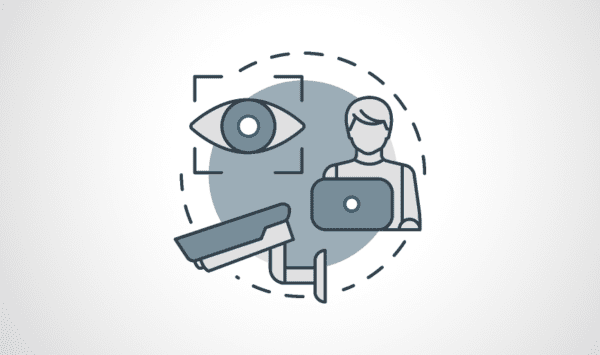
For decades, social movement scholars have been analyzing the dynamics behind protests as an occurrence of mass mobilization. In democracies, participation in protests is considered a relatively low-risk activity. However, technological advancements, such as the continued development and application of surveillance tools, sometimes work to inhibit the right to assemble and express views through protest. Throughout 2020 and 2021, social justice protests of police violence related to the killings of Breonna Taylor and George Floyd took place in cities across the United States. Researchers are still identifying the implications and dynamics of these protests such as by analyzing who surveilled those protests and how, what happened to the data that was collected, and to whom that data was transferred.
This piece provides insights into the ways in which protests are surveilled and outlines two main issues with the practices: (1) general problems with the collection of personal data at protests, and (2) the problematic ways in which protest coverage is used toward political ends. We argue that a lack of certainty regarding protest surveillance creates apprehension among some protesters, which is reinforced if protests are led by members of historically marginalized groups. Finally, we provide recommendations for ways to mitigate the fears linked to protest surveillance and to provide more transparency into the ways in which personal information is collected and stored in order to guarantee that non-violent protests remain a safe and secure option for all communities in the U.S.
General problems with collection of personal data at protests
The use of protester surveillance has been well-documented going back to the 1960s. For example, government surveillance programs, such as the FBI’s “COINTELPRO”, targeted Black Americans fighting against segregation and structural racism in the 1950s and 60s, also by surveilling participation in protests. In the summer of 2020, police surveillance of protestors was deployed across the country in cities like Portland, Minneapolis, Chicago, and New York City, amongst them Black Lives Matters (BLM) organizers. In 2021, the FBI was found to have specifically targeted protesters affiliated with BLM in an attempt to disrupt protest organization. Body-worn and security cameras, drones, text message interception, cellphone geo-tracking via Bluetooth, license plate scanners, and facial recognition were all in use across these protests. There is uncertainty about what happens with collected data after the protests. This uncertainty also includes the agents of surveillance, as not all technology they use is necessarily well-understood.1
Tracing and understanding the extent to which data is gathered by law enforcement at protests is a difficult endeavor: First, a person must have evidence of the surveillance. Second, even if a protester is confident that their personal information has been collected through surveillance, ascertaining the exact nature of that information is extremely difficult. Without the assistance of counsel, an individual may never find out the extent to which they have been surveilled. Third, existing requests are often by stalled by law enforcement. Accessing this data often requires legal assistance, meaning that only those with the adequate resources and finances to retain counsel will be provided some form of recourse once the surveillance has happened. These issues are most likely to impact marginalized and low-income protesters. Without a clear sense of what information is being learned, synthesized, and stored about a protester, the preventive actions taken by protesters becomes more apprehensive and clandestine.
The problematic ways in which protest coverage is used toward political ends
Next to the potentially problematic collection of data at protests, a second dynamic seems to discourage mobilization and participation. Protest coverage can become politicized in the sense that outlets including legacy media organizations create propaganda by combining protest imagery with deceiving information with the aim of persuasion.
Protest propaganda complicates the organization of protests by allowing the message of support to be re-shaped during and after a protest event. Who protesters are or what they are marching for can be re-contextualized to support a narrative opposite from the original intention. This also means that, in retrospect, it is nearly impossible to trace the entire story without consulting all participants of the event. For example, in October 2021, protest imagery serving as propaganda was observed in Austin when an anti-Semitic, white supremacist organization displayed a banner reading “Vax the Jews” near a Jewish community center. Alongside media reports of the banner was a photo of an Austin police officer fist-bumping one of the members of the group. One narrative by Daily Kos was that this showed clear support for the anti-Semitic group by police officers. However, the Chief of Austin Police intervened to reframe the occasion and emphasized that the police officer had forced the group to disperse and, when one of the group members wanted to shake the officer’s hand as an act of goodwill, the police officer opted instead for a fist-bump. The differing narratives were picked up by both conservative and liberal outlets to support varying opinions around law enforcement’s allegiances.
Circumventing potential avenues for abuse and policy recommendations
Generally, protesters have been taking precautions against these forms of surveillance. For instance, many online guides advise protesters to bring face coverings to shield their faces from surveillance and to use end-to-end (E2E) encrypted messaging apps, such as Signal, to communicate with one another. This is particularly relevant for racial, ethnic, and religious minorities as existing research has shown that they face a higher probability of being surveilled when they attend protests. In an examination of regime control frameworks, the use of protest propaganda to label protesters negatively is a consistently-successful means of reducing citizens’ willingness to protest.
Two conditions connected to the described protest surveillance as well as the manipulations and misuses of protest imagery lend themselves for points of intervention. First, regulating the sale of data acquired at protests by law enforcement to private buyers (data brokers), whose background and motivations are largely unknown. For example, private organizations or firms, including those who specialize in political campaign consulting, may be involved in the data broker ecosystem as a means of chilling their opponents.2 Being able to learn what exactly occurs with a person’s personal data would facilitate determining the risks and consequences of protest surveillance. These changes could reverse the behavioral adaptations of potential protesters who sometimes refrain from participating due to non-transparent repercussions related to protest surveillance.
Second, updating legal frameworks to adapt to emerging technologies, such as face clustering. Face clustering is the process of using algorithms capable of recognizing that a face in one image matches the same face in a different image. One example of a partnership that utilizes this approach is the partnership between law enforcement and private company Clearview AI. Clearview AI partners with police agencies who need information on suspects involved in crimes such as money laundering and human trafficking. With Clearview AI’s proprietary database of tagged faces, police can upload an image or a list of faces obtained at a protest to search for matches. Much like running a vehicle’s license plates, no prior legal authorization is needed to use facial recognition data for further identification. Again, those individuals would not be notified, nor have any way of knowing that their information had been used in such a way. Positioning this as a business opportunity, the company recently announced plans in February 2022 to expand beyond law enforcement purposes to “identify someone based on how they walk, detect their location from a photo or scan their fingerprints from afar.” The right balance needs to be found between police use of technological developments and the potential abuses by law enforcement based on legal loopholes that have not caught up with technological advancements.
In sum, as facial recognition and the data broker ecosystem has developed, journalists and protesters have also adapted to this new digital landscape. Photos and videos provide a double-edged sword for protesters, providing accountability and transparency, but also traceability. Facial recognition technology allows for protesters to be identified, located, and tracked using media created at protests. The philosophy of “do no harm photography” has been promoted as one means of mitigating harm, in which protests are covered by media, but photographers are careful to ensure that individual protesters are not identifiable. This helps protesters who fear retaliation when their participation in protests becomes public. Although tactics and strategies to avoid identification exist, such as masking and turning off cellphones, protester concerns are grounded in recent examples of protester harassment and violence.
Protest surveillance by law enforcement has proven useful in holding protesters who turned to violent accountable, as the prosecutions following to January 6th insurrection have shown. Going forward, sensible policies that acknowledge the benefits of (some) surveillance should be incorporated into deliberations that guard the right to assemble and protect those, especially minorities, who have been historically targeted in efforts to reduce their willingness to protest.
Acknowledgements
The Center for Media Engagement, with support from Open Society Foundations, partnered with the Robert S. Strauss Center for International Security and Law to explore protest surveillance, especially protests by and related to racial, ethnic, and religious minorities.




